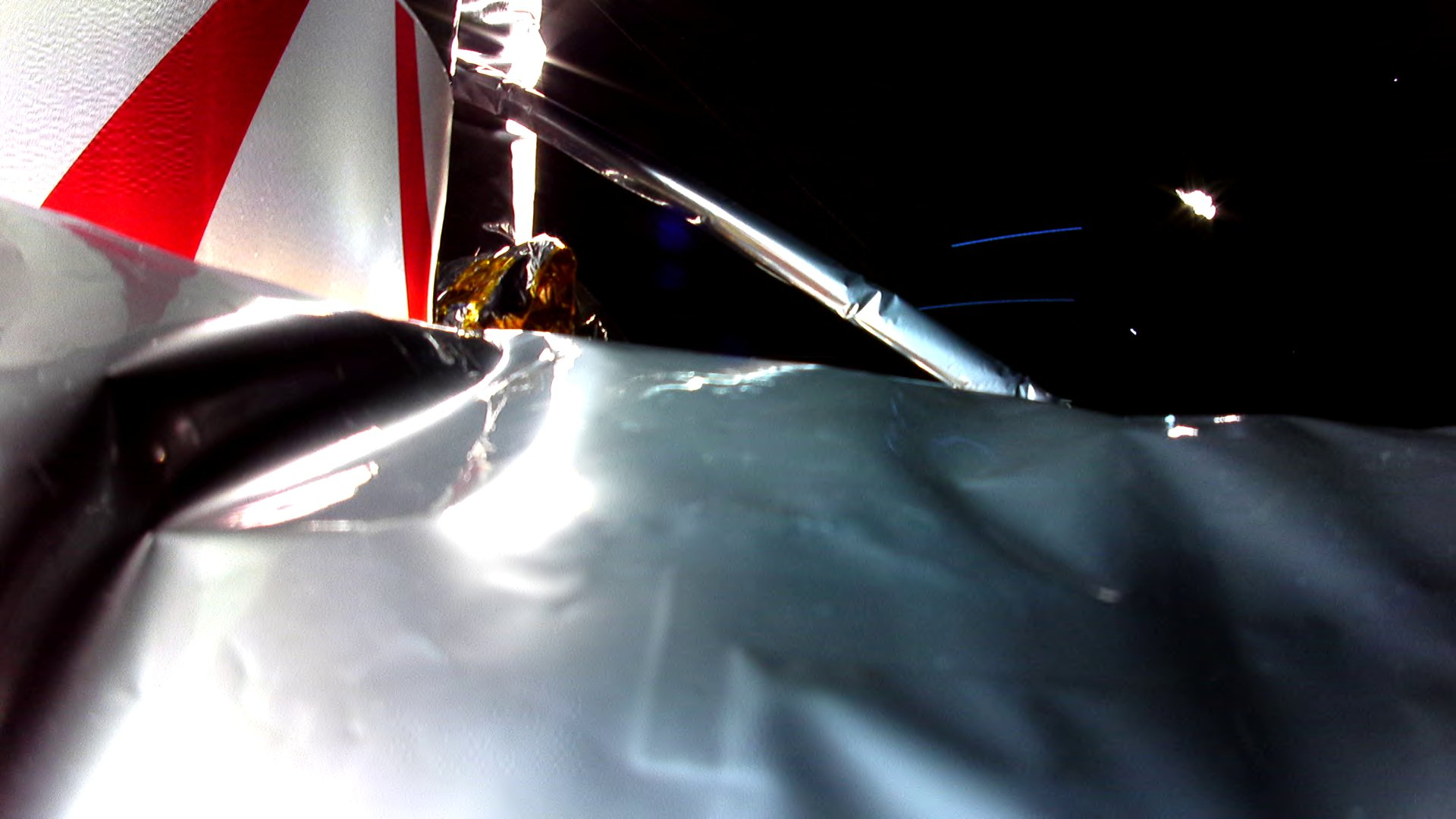
Update for 12 p.m. EST on Jan. 9: Astrobotic issued another mission update on Monday evening (Jan. 8), which stated that Peregrine had just 40 hours of fuel left at that time. Read our story about that update here.
Astrobotic's troubled Peregrine moon lander has snapped its first photo in the final frontier, and the image holds clues about what happened to the spacecraft.
Peregrine lifted off early Monday morning (Jan. 8) on the first-ever mission of United Launch Alliance's new Vulcan Centaur rocket. The historic launch went well, but Peregrine ran into problems shortly after deploying from the rocket's Centaur upper stage.
The lander failed to orient itself properly to face the sun to charge its solar panels, an issue that Astrobotic thinks stemmed from an anomaly in Peregrine's propulsion system. That hypothesis was bolstered by the first image the lander snapped in space, which the company shared today via X (formerly known as Twitter).
"The camera utilized is mounted atop a payload deck and shows Multi-Layer Insulation (MLI) in the foreground," Astrobotic wrote in the X post that featured the photo. "The disturbance of the MLI is the first visual clue that aligns with our telemetry data pointing to a propulsion system anomaly."
Related: Private Peregrine moon lander suffers 'critical' fuel loss after launch, mission at risk

Peregrine aimed to pull off the first-ever moon landing by a private spacecraft, a milestone targeted for Feb. 23 or thereabouts. It doesn't look like that's going to happen, however; the anomaly has caused a "critical loss of propellant," and Astrobotic is now looking into alternative mission scenarios.
There is some good news, however: The mission team has managed to get the lander's battery fully charged, "and we are using Peregrine's existing power to perform as many payload and spacecraft operations as possible," Pittsburgh-based Astrobotic wrote in that same X post.
Peregrine flew on Monday as part of NASA's Commercial Lunar Payload Services (CLPS) program, which arranged to get five agency science instruments on the lander.
It was the first launch for CLPS, which aims to boost lunar research ahead of crewed visits to the moon via NASA's Artemis program later this decade. The next CLPS mission is targeted for next month, when Houston company Intuitive Machines' Nova-C will lift off atop a SpaceX Falcon 9 rocket.




!["[T]he First and Fifth Amendments Require ICE to Provide Information About the Whereabouts of a Detained Person"](https://images.inkl.com/s3/publisher/cover/212/reason-cover.png?w=600)


